For years, the team at Kaged Muscle has been waking you up with powerful, energy-driven supplements like Pre-Kaged and Hydra-Charge Amped. But now it's time to bring you back down to earth, helping you rest, relax, and get a full night's sleep -- all so you can do it again tomorrow!
Say goodnight to sleeplessness with Sleep SR
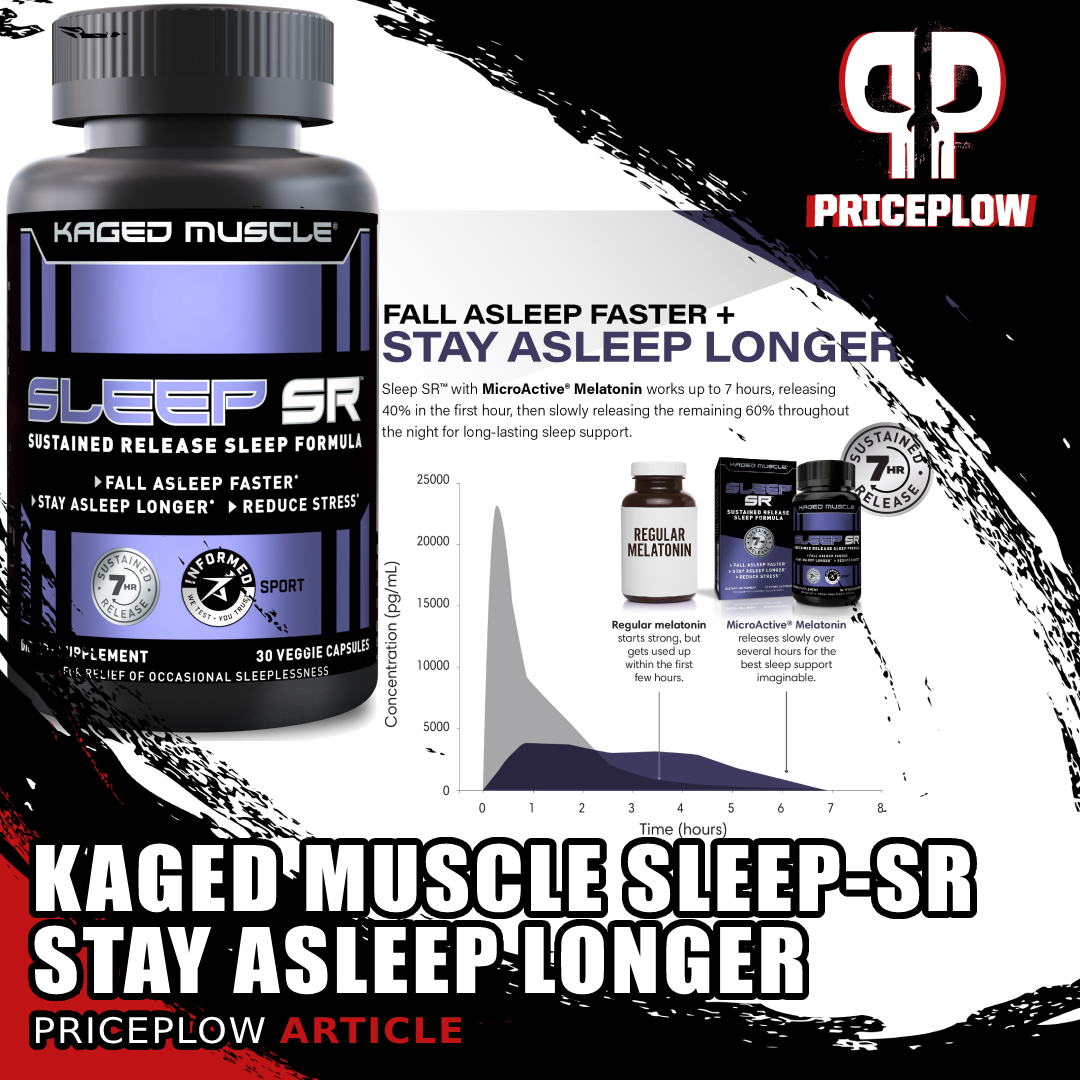
Sleep SR is a one capsule sustained-release sleep aid that will have you feeling good with more serotonin, and keep you asleep with long-lasting melatonin!
Kaged has recently released Sleep SR, a sustained release sleep aid that comes in just one capsule to help you fall asleep faster and keep you asleep longer, letting you wake up feeling more refreshed.
It's made with a sustained release melatonin ingredient that keeps working throughout the night, but is also fronted with a trio of ingredients to boost serotonin production as well, doubling as a stress reducer. In addition, you can sleep like a baby using milk-derived Lactium, which can boost GABA expression and settle you down even further.
If sleep has become your enemy, and your standard melatonin supplements haven't kept you asleep throughout the entire night, keep reading - Sleep-SR may be exactly what you're looking for - and it's available in just a single capsule.
The research is covered below, but first, take a moment to check out PricePlow's prices and sign up for our Kaged news alerts:
Kaged Sleep SR – Deals and Price Drop Alerts
Get Price Alerts
No spam, no scams.
Disclosure: PricePlow relies on pricing from stores with which we have a business relationship. We work hard to keep pricing current, but you may find a better offer.
Posts are sponsored in part by the retailers and/or brands listed on this page.
This area is reserved for Team PricePlow's upcoming Ingredients video.
Subscribe to our channel and sign up for notifications so you catch it when it goes live!
Sleep SR Ingredients
In just one capsule, you get calming, relaxing, and sleep-inducing effects from the following ingredients:
-
L-Tryptophan - 275 mg
L-Tryptophan is the first part of Sleep-SR's three serotonin-stimulating ingredients, and the most important building block for the critical neurotransmitter, as you can see in the reactions below:[1,2]
The Tryptophan to Serotonin pathway by way of 5-HTP. Don't have enough tryptophan around because of weak diet? Get more here.. and below we discuss how Vitamin B-6 can add additional help. Image courtesy Wikimedia Commons
Tryptophan is an essential amino acid found abundantly in meat, and without enough of it, we cannot generate enough 5-HTP (5-Hydroxytryptophan shown above), which then gets converted to serotonin.[1,2]
Generating serotonin: The happy hormone
Serotonin is the well-known neurotransmitter that has an enormous impact on the body, regulating mood, cardiovascular health, digestion, and even sexual health.[3,4] We like to refer to it as the "feel-good" neurotransmitter. It's often targeted while treating various medical and mental disorders, and deficiency (or trouble creating it) leads to numerous problems.
We firmly believe that low tryptophan consumption (as well as low intake of high-bioavailability Vitamin B6 and Folate, discussed below) are a major reason for the common negative mental consequences of dieters who don't eat enough foods high in tryptophan.[5-10]
Since that serotonin can eventually get converted to melatonin, we often describe tryptophan supplementation as a kind of "time-released melatonin" -- but that's something Sleep-SR has as well!
Tryptophan and sleep
Tryptophan was the subject of a great deal of sleep research in the 1960s and 70s, capped off with a 1982 meta-analysis analyzing 40 studies throughout those decades.[11] The researchers came to the conclusion that the best effects are found on normal subjects with mild insomnia or take slightly longer than average to fall asleep.
Over time, research moved on to other ingredients (such as melatonin), but it's important to note that tryptophan is a very important building block for timely rest and relaxation - but not the only thing required.
-
Lactium (Casein Hydrolysate) - 150 mg
Kaged's own branding says "Sleep Like a Baby with Lactium", alluding to the warm glass of milk before bed that many like to give their kids.
Lactium is a casein bipeptide (mainly alpha-casozepine) that mimics our brain's relaxation neurotransmitters and may reduce symptoms of stress by reducing cortisol. The ingredient was actually inspired by the state of calm that babies undergo after drinking mother's milk.
More specifically, the compound has a selective affinity GABAA receptors, which means it can increase the activity and release of gamma-aminobutyric acid (GABA), our "downer neurotransmitter" that has relaxing properties and can reduce anxiety.[12,13] However, it works through a natural and non-addictive mechanism.
Stress reduction
The ingredient has been around since 2002, with a few internal research studies under its belt - most of it geared towards stress reduction. In one such study conducted on 52 healthy young adult men and women (ages 18-40) for 30 days, 150 milligrams per day of Lactium demonstrated a reduction of blood pressure compared to placebo when put under a stress-inducing Stroop test.[14]
Improved sleep
Another double-blinded, placebo-controlled study on 48 middle-aged subjects with mild to moderate sleep disturbances was conducted using 300 milligrams per day.[14] It noted significantly improved sleep profiles, greater total sleep time and sleep efficiency, and decreased time to fall asleep and wake back up in the morning.[15]
Overall, Lactium looks like a very unique and safe way to target the GABAA receptors while providing a time-released melatonin mechanism in the forefront.
-
Melatonin (as MicroActive Melatonin) - 2 mg
A key ingredient in so many sleep aids, Sleep SR contains 2 milligrams of melatonin -- but in the form of a sustained release blend from MicroActive melatonin. According to Kaged's website, it gets released over the course of seven hours -- 40% within the first hour, then the last 60% over the next 6-7 hours. This is shown in the image below:
The natural melatonin process. Aralkylamine N-acetyltransferase is involved in the in the day/night rhythm and production of melatonin. It does this via serotonin. Image courtesy Wikimedia Commons.
It's obviously meant to help you fall and stay asleep over the course of the night. Most know what melatonin does for them at this point, but below is a quick refresher:
How melatonin is made, and how it works
The body's pineal gland produces melatonin naturally through a multi-step process started above with L-Tryptophan, making its way to 5-hydroxytryptophan (5-HTP), which then interacts with aromatic L-amino acid decarboxylase to form serotonin, which then interacts with hydroxyindole-O-methyltransferase to generate N-acetylserotonin, before finally yielding melatonin.[2] These final steps are shown in the image below:
Melatonin is a hormone that has a calming and sedative effect on the brain.
The sunlight / blue light connection
The above process is initiated in the dark, or perhaps it's better to state that it's suppressed when there are large amounts of light.[16]
You've likely heard about blue light and how it should be prevented before bed, and this is exactly why -- too much sunlight inhibits melatonin production.[17] That makes perfect scientific, evolutionary sense - but it now applies to artificial blue light, such as those from electronics as well. This is why it's so important to focus on quality sleep hygiene on top of proper nutrition and supplementation.
Melatonin sleep research
There are so many studies on supplemental melatonin at so many doses, it's impossible to cite them all. It's better to look at well-performed meta analyses, such as the one published in 2013 on 19 studies and 1683 subjects.[18] There, the scientists noted that melatonin consistently demonstrates statistically significant efficacy in helping users fall asleep faster while increasing total sleep time. They also noted that the longer trials worked better,[18] which is good for those who are concerned about habituation or tolerance.
The biggest challenge when formulating sleep aids is settling on a dose. We've seen them all, and in general, the greatest number of users seem to most enjoy the ingredient in the lower dose ranges, where there are fewer anecdotal "hangover" effects.
2 milligrams, especially since it's time-released, seems like a very reasonable yet effective dose - exactly what we expect from a Brian Rand formulated supplement.
Now it's time for the extra vitamin support:
-
Vitamin B6 (as pyridoxal 5'-phosphate) - 10 mg (588% DV)
Any sleep aid or relaxation supplement relying on production of serotonin (such as from tryptophan or 5-HTP) needs a solid dose of Vitamin B6. Why? Because it's a major part of the final step in serotonin's generation via tryptophan hydroxylase, an enzyme whose activity is strongly downregulated when facing Vitamin B6 deficiency![19]
The quality form of Vitamin B6 - P5P!
What's the deal with Pyridoxine causing all of that cell death?! It's probably best not to supplement it. In this chart, higher is WORSE![20]
Thankfully, Sleep SR has it included, and thankfully once again, they used the high-quality form in pyridoxal 5'-phosphate, also known as P5P. This is closer to the natural form that works best and is most easily absorbed in our bodies[21,22] (which we normally get from eating animal-based foods).
Far too often, we see cheaper forms of B6 like pyridoxine, which can get oversaturated and even potentially cause sensory neuropathy![23] In fact, it can even inhibit the enzymes that depend on vitamin B6, creating a negative feedback loop that limits absorption.[24] This is discussed in a paper titled "The Vitamin B6 Paradox", which demonstrates how high concentrations of pyridoxine lead to decreased vitamin B6 function.[20]
Sleep SR avoids that by using a better -- albeit more expensive -- form.
Finally, as an added possible effect, the Vitamin B6 that's often used in ZMA supplements is reported to generate vivid dreams![25] However, that data is based upon pyridoxine, which we just emphasized is not being used here, so we're not sure how well the dream effects translate to P5P.
-
Folate (as Quatrefolic (6S)-5-Methyltetrahydrofolic acid, Glucosamine Salt) - 200 mcg DFE (50% DV)
To finish off Sleep SR as well as its serotonin-production trifecta, we have another high-quality vitamin that's used far too seldomly: Folate as 5-MTHF, more scientifically known as 5-Methyltetrahydrofolic. However, this isn't just any 5-MTHF supplement, it's a glucosamine bound salt named Quatrefolic. This form promises longer lasting stability and better bioavailability, water solubility, and a well-established safety profile.[26]
Why add folate?
Backing things up, folate is sometimes known as Vitamin B9, and you see it in so many prenatal supplements because it's essential for fetal development. However, it's also been shown to improve mood[27,28] - and it's likely due to interaction with the serotonin system. Folate supplements are often used alongside mood-altering drugs, with success at proper dose levels.[29]
Why use 5-MTHF?
Folate is often supplemented as the cheaper form in folic acid, but that involves several biologically-taxing steps that are required in order to make it to the active form, which is 5-MTHF.[30,31]
But not all users can handle folic acid the same. Many of us have a genetic predisposition that impairs our ability to generate the active form discussed above, which are primarily due to mutations in our MTHFR genes which downregulate an important enzyme known as methylenetetrahydrofolate reductase.[32-34]
This can lead to many problems for certain users, and the best thing for supplement manufacturers to do is to include the active form that we have here, which has better bioavailability data across greater populations.[35,36]
With a folate you can use, the serotonergic system can function properly, getting you to the feel-good state you need to be in to fall asleep soundly. Otherwise, your body can remain in an anxious, panicked state, as it is deficient in a critical vitamin that it may want you to go hunt for. One less problem, one more step towards sleep.
As always, Kaged Muscle supplements are 3rd party tested and shown to be free of banned substances, all backed by a 100% money-back guarantee.
Dosage / Instructions
Per the dosage directions, take just one capsule 30-60 minutes before bed.
One Sleep SR Cap is all it takes

Kaged Muscle Pro-Biotic is a probiotic supplement using Lactobacillus Plantarum TWK10, which has been shown to improve athletic performance (likely by generating more ATP in the digestive tract)!
In just one capsule, we have a solid feel-good sleep aid that hits a couple of pathways, and hits them properly. It's fine to throw some melatonin at the problem, but it's even better to do it properly -- by providing you with the substrates to make your own melatonin while also giving you a time-released boost exogenously.
With this and the recently released Pro-Biotic, Kaged Muscle has put out some incredibly effective supplements lately, introducing new ingredients to the market -- and both are convenient, coming in at only one capsule!
This isn't one of those supplements that is going to knock you out for three days - this is a wisely-formulated sleep aid that will gently bring you down, and allow yourself to come back up without drama. If you've been on edge and aren't sleeping well because of it, work on knocking out some of that stress - but also give yourself the tools to generate some serotonin while you're at it with a single cap of Sleep-SR.
Kaged Sleep SR – Deals and Price Drop Alerts
Get Price Alerts
No spam, no scams.
Disclosure: PricePlow relies on pricing from stores with which we have a business relationship. We work hard to keep pricing current, but you may find a better offer.
Posts are sponsored in part by the retailers and/or brands listed on this page.

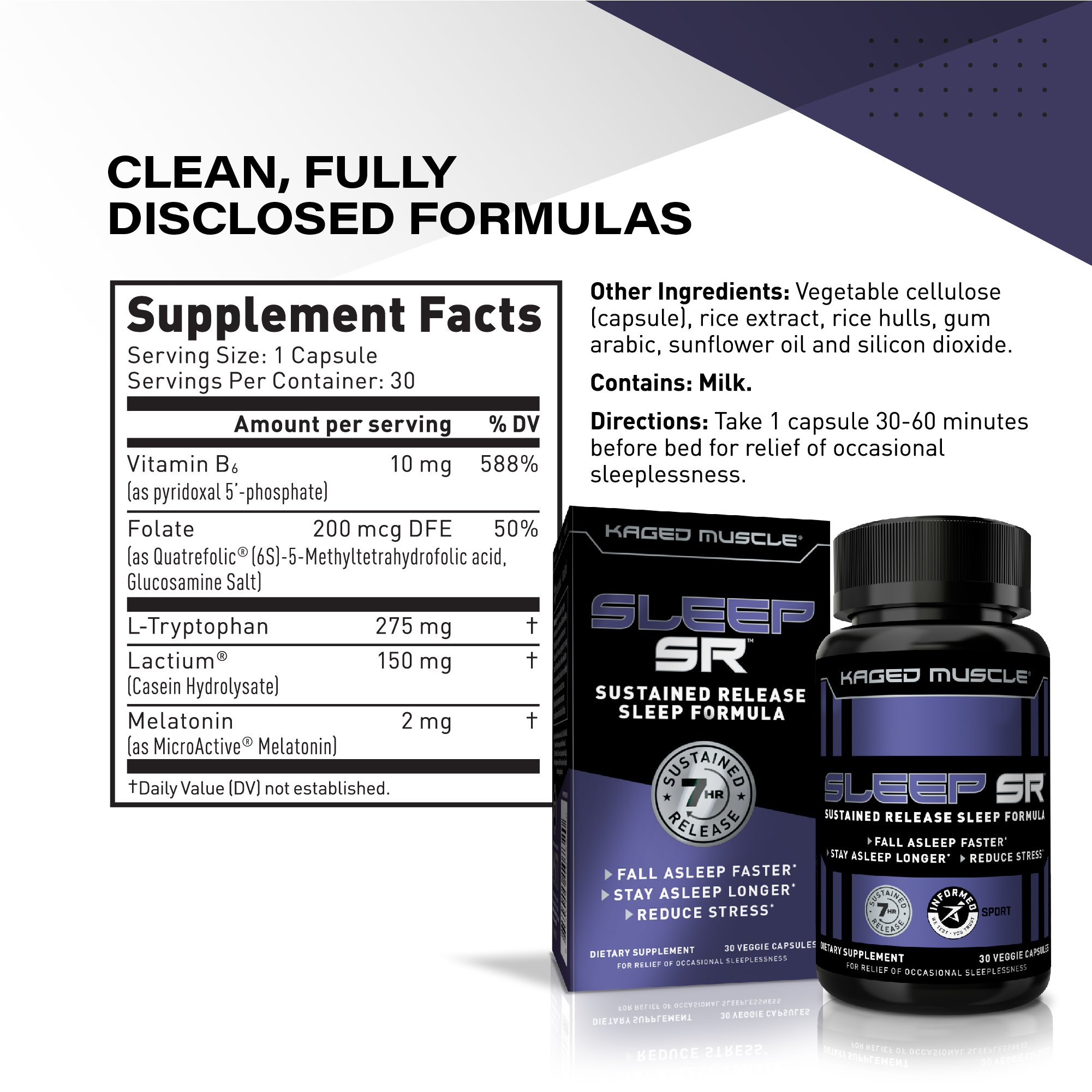
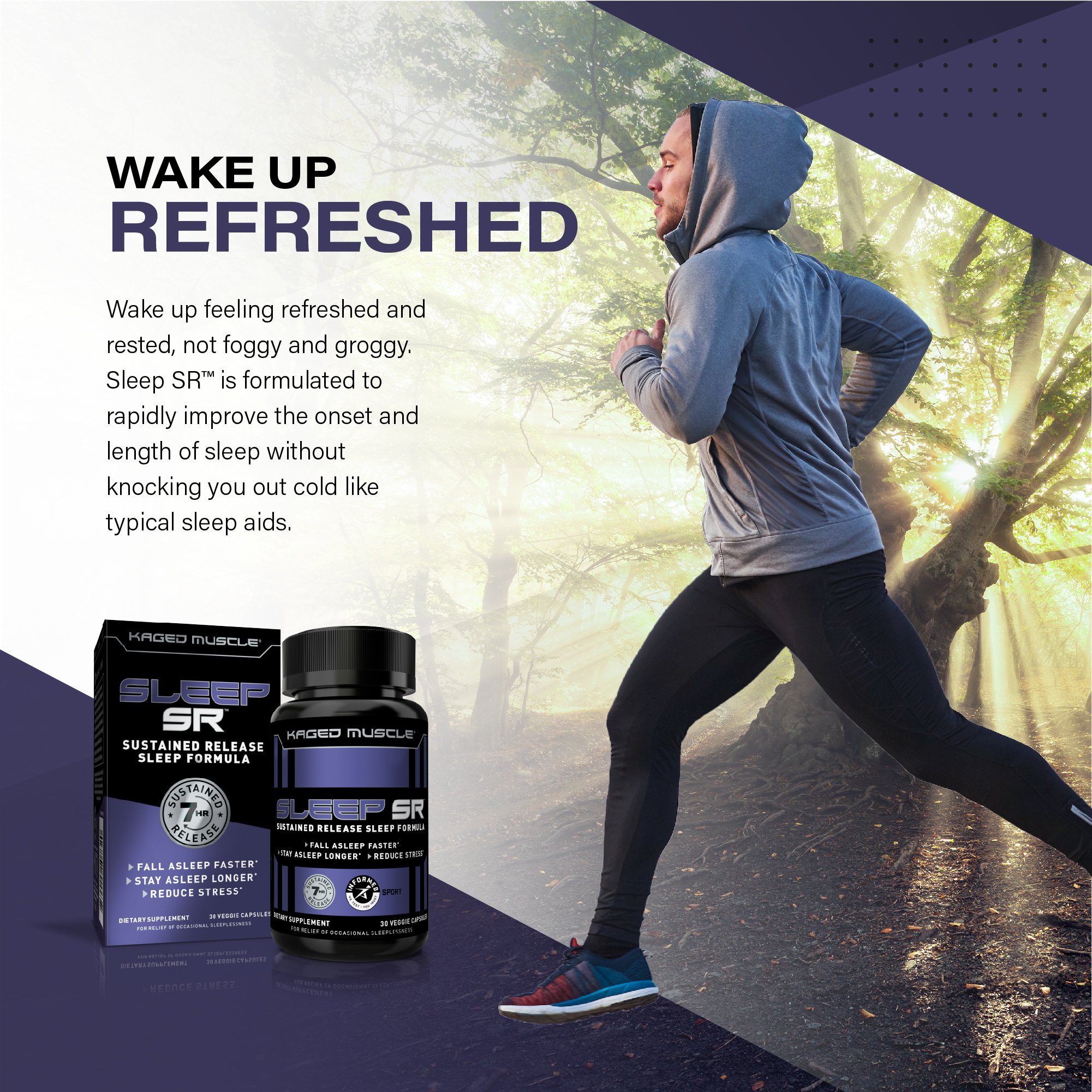

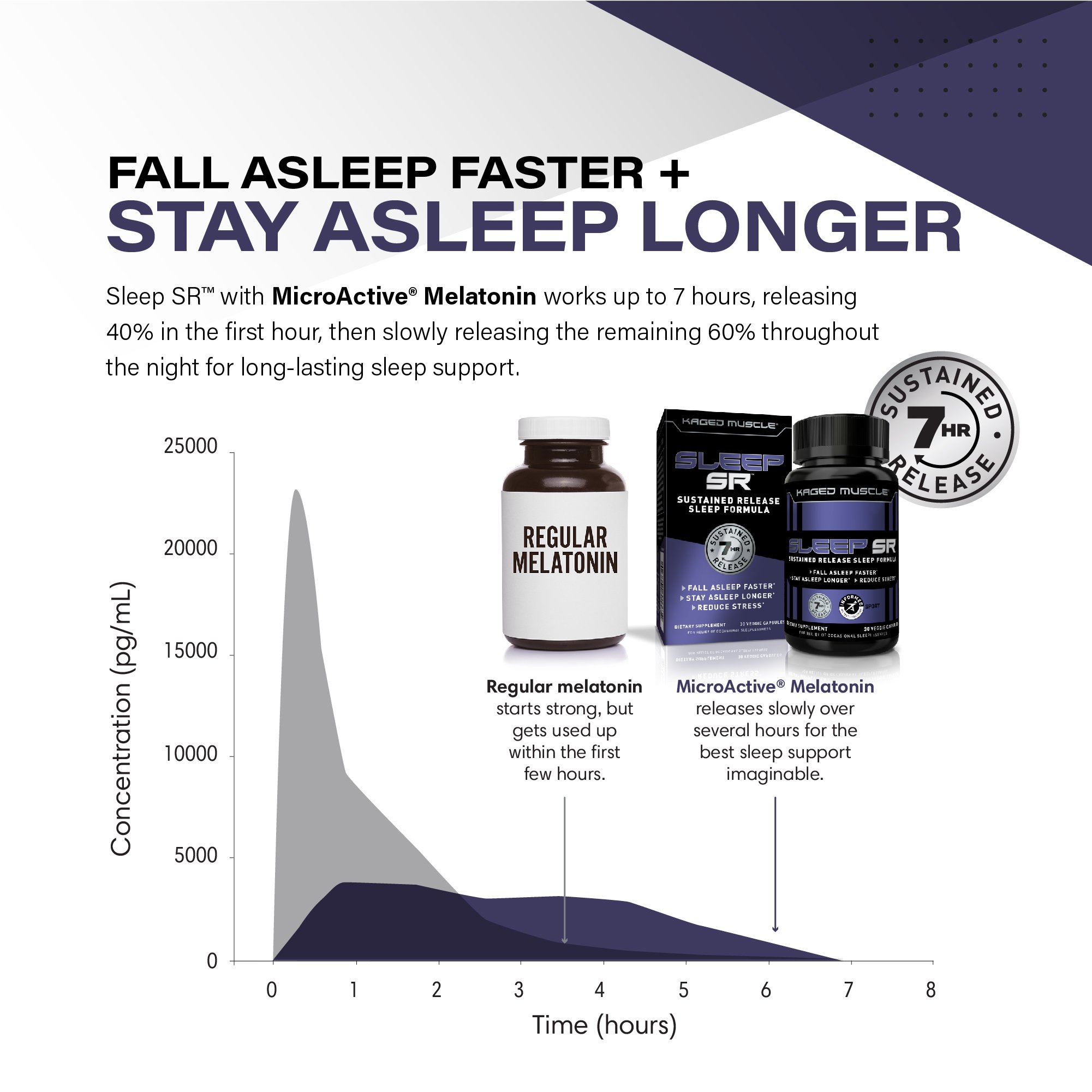
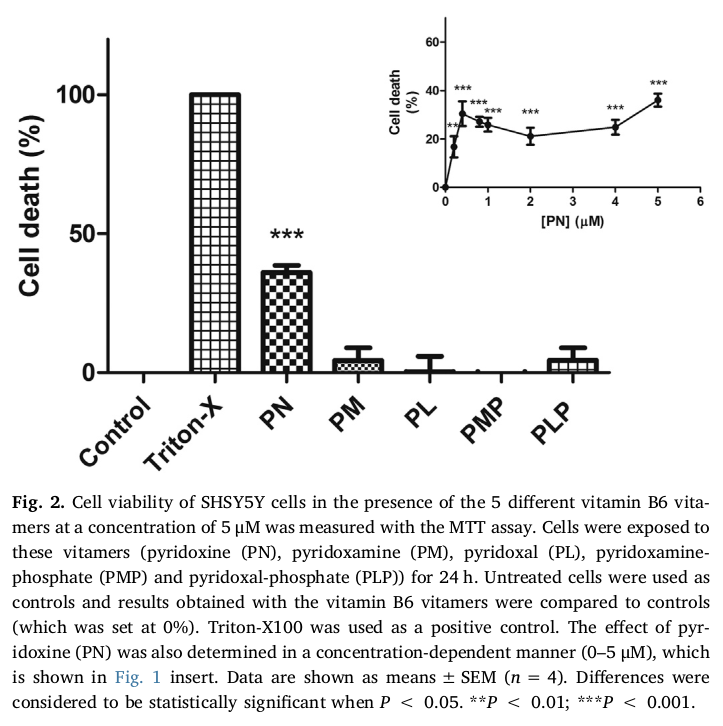
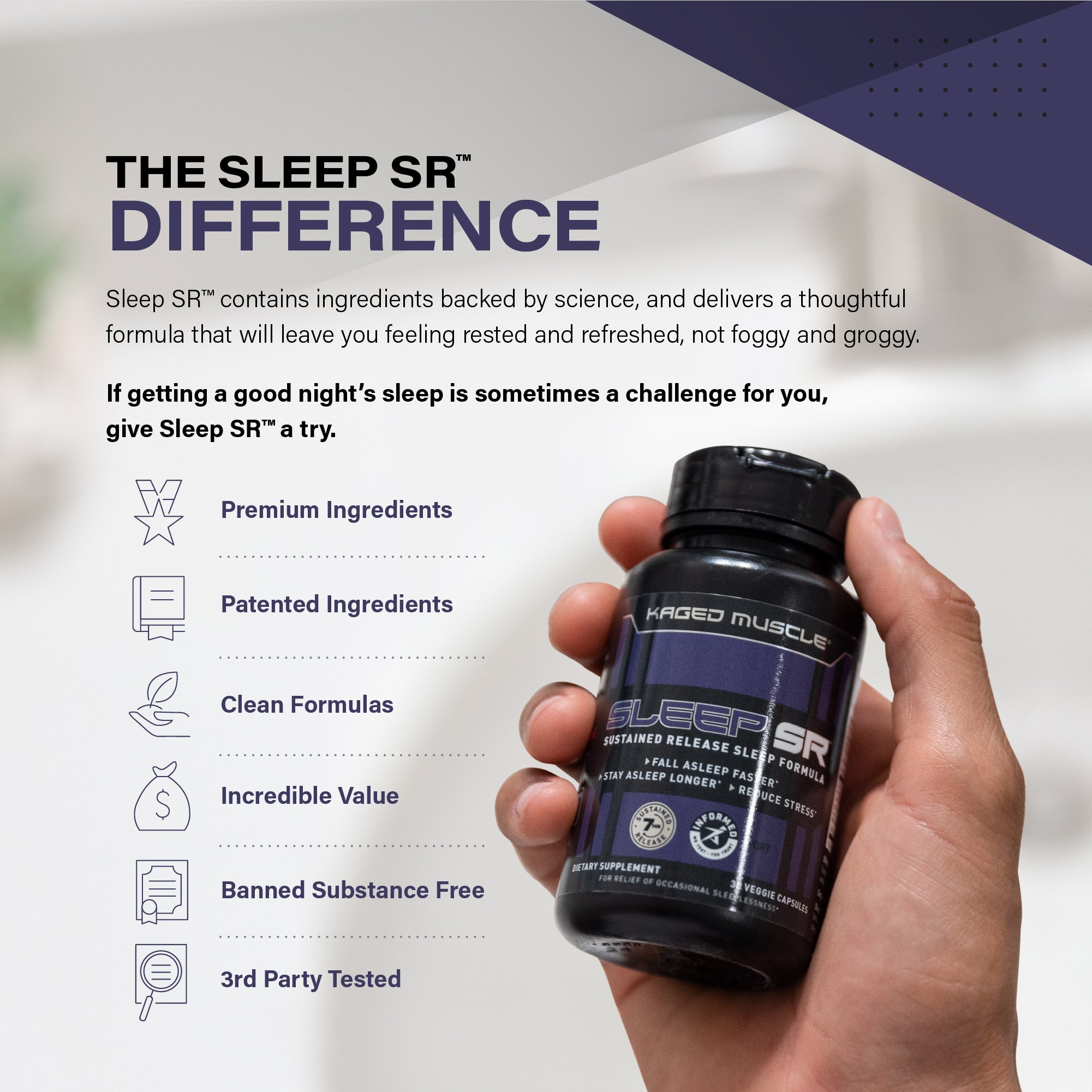


Comments and Discussion (Powered by the PricePlow Forum)